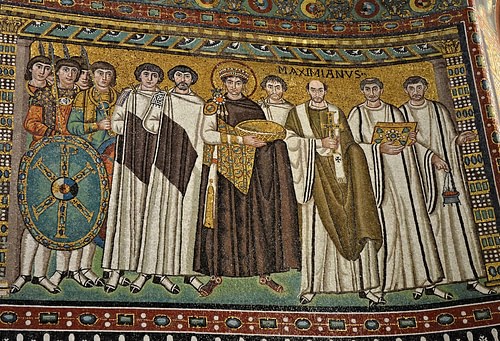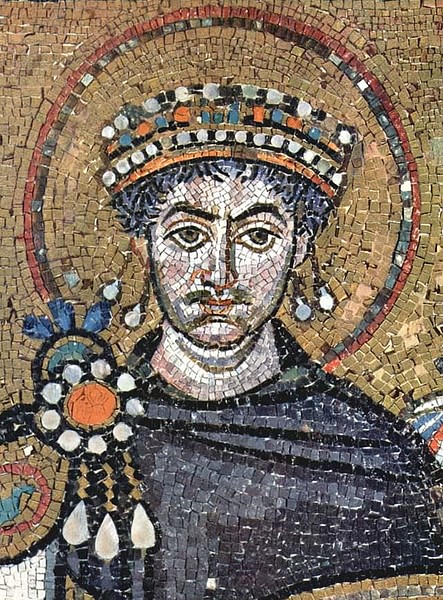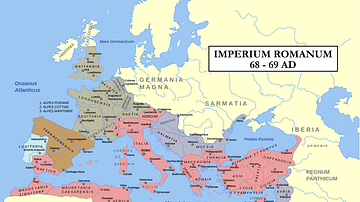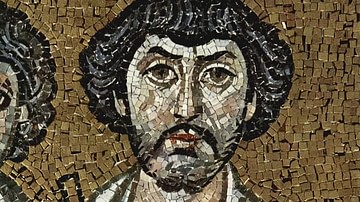
The Justinian Code or Corpus Juris Civilis (Corpus of Civil Law) was a major reform of Byzantine law created by Emperor Justinian I (r. 527-565 CE) in 528-9 CE. Aiming to clarify and update the old Roman laws, eradicate inconsistencies and speed up legal processes, the collection of imperial edicts and expert opinions covered all manner of topics from punishments for specific crimes to marriage and the inheritance of property. Not only used as a basis for Byzantine law for over 900 years, the laws therein continue to influence many western legal systems to this day.
A New Law Code
In February 528 CE Justinian I assembled a group of ten legal experts and 39 scribes to reassess Byzantine law and compile a new collective legislative code. It was a truly Herculean task which involved studying hundreds of documents and Latin Roman laws dating back to the early Roman Republic of the west, deciding which were no longer relevant, which should be maintained, and which needed some adapting. The old system relied on such diverse traditional sources of Byzantine law as the Codex Gregorianus (imperial edicts from 196 to 284 CE), Codex Hermogenianus (mostly imperial edicts of Diocletian, r. 284-305 CE), and Codex Theodosianus (issued in 438 CE and containing edicts dating back to Constantine I, r. 306-337 CE).
Many of the laws within the older works were repetitive, contradictory or simply did not meet the requirements of a society which had since moved on from earlier Roman times. From over 2000 books and three million lines of legal text, a new comprehensive and consistent body of laws had to be thrashed out and distilled and then better organised into subjects and themes. As a result, Justinian would achieve his multiple aims of making the laws clearer for all, reducing the number of cases brought before the courts (many were based on misunderstandings and a misinterpretation of what actually was the law), and increasing the speed with which legal cases were dealt with. Justinian may also have been motivated by a desire to outdo the famed legal achievements of Theodosius II (r. 402-450 CE), and this he undoubtedly did achieve. Finally, a new and consistent law code would help in Justinian's plan to expand the Byzantine Empire into new territories and bring those societies under the jurisdiction of Roman law.
Content
The commission to update Byzantine law was led by the great legal expert Tribonian who had already served as quaestor of the Great Palace of Constantinople, the highest legal position in the empire. The first part of the Corpus Juris Civilis was completed in April 529 CE, and two more parts were added in the following year. The work superseded all previous legal documents and records of any kind. To add to these, Justinian himself issued decrees, and thus the Justinian Code was eventually made up of four main parts:
- Codex Justinianus - the Codex, issued in 529 CE, was a collection of 12 books containing 4,562 imperial edicts from the time of Hadrian (r. 117-138 CE) to Justinian I himself, organised by theme and all correctly attributed to the emperor who had made them and with a date. Interestingly, the first book deals with ecclesiastical topics whereas in the older codexes this was dealt with last - an indicator of how Christianity had become more entrenched in Byzantine culture by the 6th century CE.
- Digestum (or Pandectae) - the Digest (or Pandects), issued in December 533 CE, was a compendium of legal opinions by celebrated Roman jurists of the past, which could be cited by claimants and defenders in court. It was also designed to be of use to practising judges. These words of wisdom were all edited, reduced and assembled into 50 books (instead of the previous 1,500) and all organised by subject. The works of the prolific 2nd-3rd century CE lawyer and writer Ulpian (aka Domitius Ulpianus) were especially popular with Justinian's legal team, and these make up 40% of the Digest.
- Institutiones - the Institutes, also issued in December 533 CE, was a sort of handbook of the Codex and Digestum for law students to better understand and apply them. It was compiled by Trebonian and two other experts, Theophilos and Dorotheos.
- Novellae Constitutiones - the Novels (or New Laws) was a collection of the imperial edicts made by Justinian between 534 and 565 CE, the final year of his reign. Instead of Latin, as used previously (and still used in the other three parts), Greek was mostly used in these new edicts, the common language of the Byzantine Empire.
The laws within this huge body of work (still around 1 million words) dealt with every aspect of life and society in Byzantium. There are matters regarding the constitution, the powers of the emperor, the duties of high-ranking officials, and the sources of law. There are matters of private law and criminal law with punishments listed for specific crimes, as well as coverage of administrative affairs and issues related to tax, local government, the civil service, and the military. As with previous Roman law, a particular concern was the relations between individuals such as contracts, marriage, divorce, property ownership, inheritance, and succession. Finally, ecclesiastical matters were given much greater prominence in a departure from previous law codes.
The Novels, in particular, addressed the social changes that Byzantine society had undergone and its evolution away from the Roman society of Constantine's days. Thus the rights of such groups as women, slaves, and children were improved. Further, it was now established, for the first time in Roman law, that the emperor was the single legitimate source of law.
Justinian's Code was itself revised within a few years to reflect recent legislation and reissued in December 534 CE (it is this version which exists today). To prevent any future confusion as to what was what, all commentaries on the Code were banned. The Code was studied by students of law in the fifth year of their studies. As a consequence, gradually most of the Codex was translated into Greek by the end of the 6th century CE. Justinian's Code was also introduced into the recently reconquered Italy (in 554 CE), but it was relatively neglected there until the 11th century CE when it was incorporated into the medieval Corpus Iuris Civils using Latin instead of Greek. Parts of North Africa also used the Code until the Arab expansion of the 7th century CE.
Legacy
The body of laws created by Justinian and his experts, in one form or another, lasted for almost a millennium until the fall of the Byzantine Empire in 1453 CE. New Byzantine laws were, of course, added to it over the centuries as each emperor issued their own edicts and society evolved. Leo VI (r. 886-912 CE), for example, famously produced another collection of Byzantine edicts and had everything translated into Greek as next to nobody understood Latin anymore (few ordinary people would have even in Justinian's day).
The Corpus Juris Civilis may have failed in Justinian's aim to aid his imperial ambitions but, as it became a fundamental element of any higher education across Europe from the 11th century CE and has become the basis for many legal systems ever since, perhaps he did, in the end, achieve something of a lasting cultural domination. The Code is a monument to rival his other great achievement, the Hagia Sophia of Constantinople. Roman and then Byzantine laws were, above all, rational, precise and comprehensive, and it is these qualities which have greatly influenced many of the national and international laws by which we live today. As the historian J. H. Rosser notes:
The Corpus Juris Civilis not only preserved Roman law but provided the basis of law for emerging European nations. Its influence on western civilization is probably greater than any other book, except, of course, the Bible. (101)





